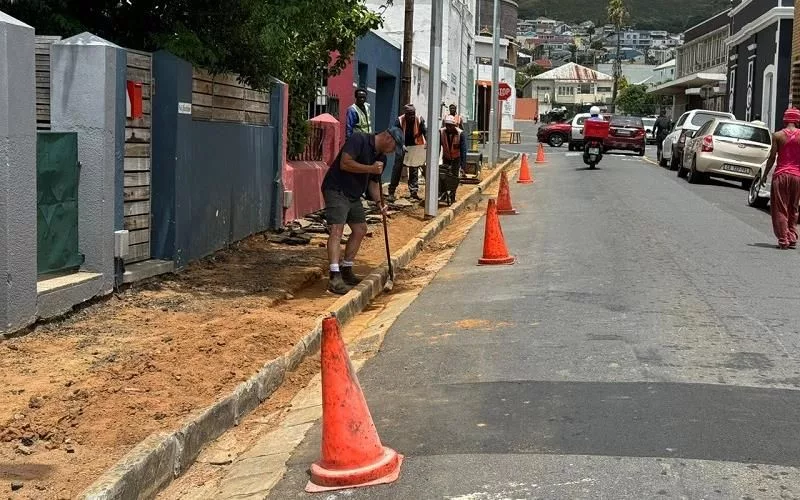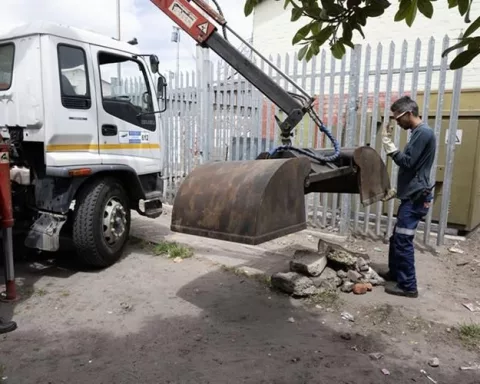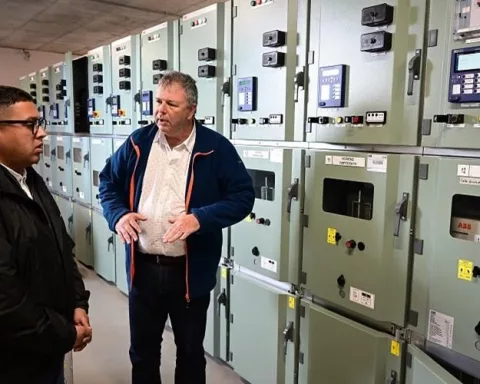Woodstock city has undergone a massive underground electricity cable project worth R9 million, transforming the energy infrastructure of the city. Over 18,000 meters of underground cabling, 78 new LED streetlights, and a mini substation have replaced the outdated overhead cables and transmission poles. The community’s enthusiasm and cooperation ensured the project’s smooth progress, serving as an excellent example of how a city can overhaul its energy landscape, bringing in a more secure, safe, and visually appealing environment.
Woodstock city is currently undergoing a massive underground electricity cable project worth R9 million, transforming the energy infrastructure of the city. 9,000 meters of overhead cables and 104 transmission poles have been dismantled and replaced with over 18,000 meters of underground cabling. The project aims to bring in a more secure, safe, and visually appealing environment, with new LED streetlights and a mini substation. The community’s enthusiasm and cooperation ensured the project’s smooth progress, serving as an example of how a city can overhaul its energy landscape.
The Grand Transformation
Woodstock city is currently witnessing an unprecedented transformation beneath its vibrant roads and streets. A massive underground electricity cable project, worth R9 million, is being carried out by the city. This monumental initiative is not only reshaping the physical makeup of the community but is also bringing a breath of fresh air into the energy infrastructure of the city.
The underground cable project kicked off in July this year. The execution of the project has been a marvel of precision and innovation, blending state-of-the-art technology with a steadfast resolve to move forward. A total of 9,000 meters of overhead cables along with 104 transmission poles were meticulously dismantled, heralding the dawn of a new era in energy transmission.
The existing infrastructure has been replaced with over 18,000 meters of underground cabling. This colossal undertaking was executed with the precision of a surgical procedure, delicately replacing dated systems with an upgraded and highly efficient cabling network.
An Era of Safety, Security, and Aesthetics
The project is not just about substituting old with new, but about ushering in a more secure, safe, and visually appealing environment. Underground cables are less exposed to weather-related damage, less prone to vandalism and less likely to be harmed in vehicle accidents. For the residents of Woodstock, this is a long-awaited change, injecting a new wave of convenience and modernity.
In addition to the new cabling infrastructure, the project brought in 78 new LED streetlights, reinforcing its commitment to green technology. This change not only contributes to energy conservation but also ensures brighter and more efficient lighting for the city. A mini substation of 800-kilo Volt Amperes (kVA) was also erected as part of this transformative project, intensifying the power supply to the community.
Councillor Beverley van Reenen, the Mayoral Committee Member for Energy, spearheaded this operation. Despite its numerous challenges, the community’s enthusiasm and cooperation ensured the project’s smooth progress. Van Reenen was pivotal in navigating hurdles and maintaining momentum throughout.
Ensuring Transparency and Accountability
Throughout this process, the city demonstrated a solid commitment to transparency and accountability. They established a communication system for residents to report damages to the municipal electrical infrastructure via SMS and email, and also provided avenues for anonymous tip-offs.
As the project edges towards completion, the city is keenly anticipating the final layer of tarring to be laid on the roads. The Woodstock community is eagerly awaiting the conclusion of this project, which stands as a testament to the power of collaboration, technological advancement, and forward-thinking.
A Priceless Endeavor
The Woodstock underground electricity cable project might have a price tag of R9 million, but its true value is beyond measure. It stands as an example of how a city can overhaul its energy landscape, leading the way towards increased efficiency, security, and aesthetic appeal. Woodstock has proven that with a clear vision, robust planning, and a steadfast commitment to progress, a city can truly transform itself.
The transformation has breathed life into the city’s aging infrastructure, replacing it with a network that is not only efficient but also resilient. The project has paved the way for a new chapter in Woodstock’s history, a chapter characterized by progress, innovation, and sustainability. The underground electricity cable project is not just a testament to technological advancement, but it is also a symbol of the city’s commitment to its residents, promising a safer, brighter, and more sustainable future.
1. What is the Woodstock underground electricity cable project?
The Woodstock underground electricity cable project is a massive initiative worth R9 million that aims to transform the energy infrastructure of the city by dismantling 9,000 meters of overhead cables and 104 transmission poles and replacing them with over 18,000 meters of underground cabling, 78 new LED streetlights, and a mini substation.
2. What are the benefits of the project?
The project aims to bring in a more secure, safe, and visually appealing environment by replacing the outdated overhead cables and transmission poles with underground cables that are less exposed to weather-related damage, less prone to vandalism, and less likely to be harmed in vehicle accidents. The new LED streetlights also contribute to energy conservation and ensure brighter and more efficient lighting for the city.
3. Who is leading the project?
Councillor Beverley van Reenen, the Mayoral Committee Member for Energy, spearheaded this operation, navigating hurdles and maintaining momentum throughout.
4. How is transparency and accountability ensured during the project?
The city established a communication system for residents to report damages to the municipal electrical infrastructure via SMS and email and provided avenues for anonymous tip-offs, demonstrating a solid commitment to transparency and accountability.
5. What is the true value of the project?
The Woodstock underground electricity cable project might have a price tag of R9 million, but its true value is beyond measure. It stands as an example of how a city can overhaul its energy landscape, leading the way towards increased efficiency, security, and aesthetic appeal while promising a safer, brighter, and more sustainable future for its residents.
6. What is the current status of the project?
The project is currently underway, with over 18,000 meters of underground cabling, 78 new LED streetlights, and a mini substation already in place. The city is keenly anticipating the final layer of tarring to be laid on the roads as the project edges towards completion.












